- Home
- Paul Christopher
The Second Assassin
The Second Assassin Read online
The Second Assassin
Table of Contents
Cover
Title Page
Dedication
Epigraph
Prologue
Chapter One
Chapter Two
Chapter Three
Chapter Four
Chapter Five
Chapter Six
Chapter Seven
Chapter Eight
Chapter Nine
Chapter Ten
Chapter Eleven
Chapter Twelve
Chapter Thirteen
Chapter Fourteen
Chapter Fifteen
Chapter Sixteen
Chapter Seventeen
Chapter Eighteen
Chapter Nineteen
Chapter Twenty
Chapter Twenty-One
Chapter Twenty-Two
Chapter Twenty-Three
Chapter Twenty-Four
Chapter Twenty-Five
Chapter Twenty-Six
Chapter Twenty-Seven
Chapter Twenty-Eight
Afterword
Author’s Note
Next in Series
Copyright
For my grandson Gabriel, with love and hope.
Treason doth never prosper: What’s the reason?
For if it prosper, none dare call it treason.
Sir John Harrington, seventeenth-century poet
Prologue
Tuesday, October 9, 1934
The man sat at the window of the darkened room on the fifth floor of the Hotel Louvre et Paix in Marseille, patiently watching the broad avenue below through a narrow gap in the heavy pea-green curtains. He brought his arm up into the light and checked his wristwatch. It was almost 4:00 p.m. The crowds had been gathering on the wide pavements of rue Canabière since noon, waiting for the Yugoslavian king, Alexander Karageorgevic, who was making his first state visit to France.
According to the front-page stories in Le Petit Provençal, the king was scheduled to arrive in Marseille on the cruiser Dubrovnik, then drive along the Canabière in regal procession, continuing up the steep hill to the Gare St Charles. At the railway station, a lavishly outfitted train was waiting to take him to Paris for a grand fete later that evening in Versailles.
Standing, the patient man took a step forward and unlatched the tall windows, pushing the right side open several inches. He could hear the excited chatter of the crowds below him on the pavements. In the distance, he could hear the faint sound of martial music coming from the bottom of the hill. Alexander had arrived at last; there wasn’t much time left. He turned away from the window and went to the freestanding armoire beside his bed.
He opened the heavily varnished cupboard and took out a small valise and his leather golf bag. From the golf bag he removed his chosen weapon for the work at hand, a Swiss M1931 Schmidt-Rubin carbine fitted with an eight-power Zeiss prismatic sight, also Swiss. The Schmidt-Rubin, minus the optics, was standard issue for the Swiss army and also the Papal Guard at the Vatican.
He’d purchased the weapon from a discreet gunsmith in Paris, complete with the sight, and brought it with him to Marseille on the train, broken down and hidden in the bag. A week ago he’d rented a dented Renault from Agence Centrale on the Prado, ostensibly to play a few rounds at the golf course in Cannes-Mandelieu, but actually to align the Zeiss rifle sight in the secluded forests of Haute Provence.
The man carried the valise and the rifle back to his chair by the window. Placing the rifle across his knees, he laid the valise on the broad windowsill, undid the straps and opened it. He first removed a pair of black wool stockings, which he had loosely filled with beach sand he’d collected several days previously while strolling on the Promenade de la Plage.
He placed the weighted pads on the windowsill then took out a brown leather cylinder, eight inches long, stitched at one end and capped at the other. Opening the cylinder he slid out a one-inch-diameter Maxim Model 15 silencer, which he then fitted over the muzzle of the rifle, using the broad nut at the bottom end of the device to firmly attach it to the threaded end of the barrel.
The Maxim silencer had been introduced for sniper use during Pershing’s Punitive Expedition into Mexico in 1916 but even after almost twenty years it was still the best noise suppressor available. The twenty interior baffles within the metal tube would reduce the sound of his shot to something no louder than a ruptured paper bag or the muffled slamming of a door. Almost as useful to him was the fact that the silencer would considerably reduce muzzle flash – a bonus on the off chance that someone was looking in his direction when he fired.
Reaching into the valise again the man took out a single six-shot magazine and carefully snapped it into place. He slipped the index finger of his left hand into the large ring at the end of the bolt action, pulled smoothly, then turned it counterclockwise and let it slide forward again, releasing the safety. That done, the man stood again, placing the rifle carefully across the chair.
He went to the window and looked out once more. The crowd was noisier now, many of the onlookers waving small French and Yugoslavian flags. There were policemen every twenty or thirty feet along the way, most of them wearing the navy-blue uniforms of the rural gendarmerie rather than the darker blue of the better-trained, and much better armed, Gardiens de la Paix.
Two blocks away, on the other side of the wide cobbled avenue, the man could see the large sign above the blue-and-white-striped canvas portico of the Hotel Bristol. On the road directly in front of the awning there was a connecting Y in the tram tracks that ran up both sides of the street. The Y in the tracks was exactly 175 yards from his position at the window – the distance paced off several times on the street, then triangulated using the distance up to the fifth floor and taking into account the difference in the slope of the hill that lay between the two hotels.
The man took one of the sand-filled stockings and placed it carefully on a scratch he’d made on the windowsill during an earlier sighting session in the room. He then balanced the second pad on the back of the chair. Finally he picked up the rifle and set it down on the pads, the forward stocking cradling the front end of the stock at the barrel’s midpoint, while the second pad held the butt of the rifle. The silencer on the end of the barrel poked less than three inches out through the narrow window opening. From below or across the street, it would be invisible, lost in the dark shadows of the room behind him.
Placing his right knee on the chair seat, the man lowered his cheek to the butt plate and curled his index finger into the trigger guard. Squinting slightly, he looked through the sight and used his free hand to adjust the focus. The cobbled street and the Y intersection of the tracks leapt into view as though he was standing no more than a dozen feet away. The crosshairs of the sight marked a spot in the air a little more than six feet above the street.
The overcast October sky was flat and grey and no breeze turned the leaves of the ornamental trees planted on either side of the thoroughfare. It was perfect shooting weather. Breathing in a slow, easy rhythm now, the patient man took up the first pressure point of the trigger and waited for the target to appear.
* * *
The man in the dark hotel room waiting to kill a king had the black, Huguenot-French look common to the southern counties of the Irish Republic – Cork, Waterford or Kerry. His birthplace was the last of these, a small, wretched Kerry village called Drumdean, cold in the bleak, forbidding shadows of the McGillicuddy Reeks.
His name was John Bone, with no middle name or initial – an odd state of affairs for a child born at the century’s turn in Catholic Kerry. His father had been a farmer and his mother worked boiling sheets for the local hotel as well as doing piecework sewing when it was
offered. John Bone had five sisters and a brother, none of whom had lived to their majority. He had been the last born and the only one to survive. His mother was dead of influenza before John Bone was ten and his father died not much later, leaving him hostage to the predatory local priest who used him as a scullery boy.
Past the tempting blush of preadolescence, John Bone was sent to a Jesuit orphanage at twelve, and after four years of a classical education, he ran away to join the Republican cause just in time for the Easter uprising in 1916. After that ill-fated event reached its predictable and tragically Irish end in the rubble of Dublin’s blasted main post office on O’Connell Street, a bounty of five hundred pounds was put on John Bone’s head.
Two years later, still at large and barely nineteen, John Bone was a crack shot with the long-barrelled Krag rifle he’d come to favour, and the price on his head had tripled. Seeing little future for himself and having little use for either the Cause or self-imposed martyrdom, John Bone fled Ireland after taking part in Michael Collins’s so-called Bloody Sunday, when fourteen British army officers in Dublin were taken from their various beds and executed in front of their families.
An Irish accent and a knowledge of the works of Catullus being more of a hindrance to employment than an asset, John Bone continued in his occupation as a soldier of fortune, honing his deadly skills. There was no lack of employment opportunities. His trade took him far and wide, from the African Rif Wars to the Afghan uprising and then across the seas to Mexico for their civil war.
By 1928 he had moved on to Brazil and from there he criss-crossed South and Central America, going wherever his services were needed, taking the side of whatever faction was willing to pay him best. Cuba in 1931, the Chaco Wars a year later, then on to Nicaragua, Uruguay and back to Cuba in 1933. In addition to his killing abilities he learned how to fly light aircraft, handle most kinds of explosives and track his quarry, human or otherwise, over any terrain, including dense jungle.
His Irish accent faded with both time and distance, and on those rare occasions when he thought about Drumdean and his past at all, it was only in unremembered dreams. He spoke Spanish fluently, French well and Italian when necessary.
Now, at the age of thirty-four, John Bone understood that he was nearing his prime and that with the passing years his reflexes and his eyes would start to falter and, he knew, eventually betray him. He lived simply and cheaply in Havana, saving most of his money. Another five years and he would have enough safely invested to retire to a life of relative ease. Bone lifted his eye from the rifle sight and listened to the growing roar of the crowd gathered along the Canabière. Five years? He could just as easily be dead within the next five minutes.
At 4:15 p.m. the first outriders in the procession appeared – a group of eight mounted soldiers in full dress uniform, complete with hanging swords. Behind the eight men on horseback, the open touring car containing the king moved slowly up the hill. The motor car was a narrow-bodied black Mercedes-Benz Kurz with wide running boards and elegantly scalloped doors. Riding in front with the uniformed driver was General Alphonse Georges, the renowned French war hero. In the rear, directly behind the general, was the king, in the full dress uniform of a Yugoslavian naval commodore, and beside the king, wearing a formal morning suit, was the diminutive, white-bearded figure of Louis Berthou, the French foreign minister.
The Mercedes drew level with the portico of the Hotel Bristol and right on cue John Bone’s partner, a florid-faced Croatian fanatic named Velitchko, jumped up on the running board, a large broom-handle Mauser automatic pistol in his fist. He began firing wildly, aiming at the king, unaware that at the request of his bodyguards Alexander was wearing his usual bulletproof vest beneath his uniform. Almost by accident, two shots struck the king in the neck and face.
Ignoring the king entirely, Bone moved the rifle slightly, the crosshairs finding Berthou, the anti-Nazi foreign minister. Bone took up the slack on the trigger. The butt of the rifle jerked back into his shoulder as he fired. Keeping his eye to the sight Bone saw the heavy bullet tear through the base of Berthou’s throat, dark arterial blood spraying up onto the snow-white beard. The little man’s hands reflexively came up to his neck and Bone fired a second time, striking the foreign minister high in the chest. Both were killing shots and Bone knew that he had accomplished his primary task.
Easing the rifle fractionally to the left Bone was amazed to see that Velitchko was still on the running board, his pistol now empty. One of the mounted guards was hacking at the Croatian’s head with a sword while Velitchko tried to fend him off with an upraised arm. People were running in all directions, uniformed policemen were trying to hold back the crowd and for a moment Bone saw the figure of a newsreel cameraman recording the whole thing on cine film.
The king, bleeding from the throat and head, had sagged against the back of his seat. Bone fired a third time and watched the impact of the bullet in Velitchko’s chest. There had been several others involved in the plot to kill Alexander but Velitchko was the only one Bone had dealt with directly.
The task complete and the only witness to his involvement now silenced, John Bone stood away from the window, taking the rifle with him. He began counting off the seconds in his head as the crowd on the Canabière now began to scream in panic. Working methodically, Bone unscrewed the Maxim silencer from the end of the rifle then shoved it and the sand-filled stockings back into the leather valise. After moving to the centre of the room, he threw back the oval rug at the end of the bed, took a nail from his pocket and, bending down, inserted it into a small hole in one of the floorboards he had loosened the previous day.
The board came up easily. Working quickly, Bone slid the rifle down into the narrow cavity, seating it snugly between two crossbeams. He pushed the satchel down into the space as well, then put the floorboard back in place and fitted the nail into its hole. Using the heel of his boot he stamped hard on the nail, pushing it down flush; then he replaced the rug. It was by no means a perfect hiding place, but for the short term there was now nothing to connect the occupant of room 506 at the Hotel Louvre et Paix to the terrible events that had taken place in front of the Hotel Bristol, two hundred yards down the Canabière.
Bone went back to the armoire, opened it and removed a dark brown, finely made leather jacket. He shrugged it on then left the hotel room, locking the door behind him. Turning to the left, away from the elevator, he walked down the corridor, went through the stairway exit door, then down to the main floor. The stairway let him out close to the rue d’Aubagne entrance to the hotel rather than the main entrance on the Canabière, which he knew would now be hopelessly blocked.
John Bone stepped out into the chilly October air and found himself instantly caught up in a pressing surge of spectators from the Canabière being pushed back into the side streets by the local gendarmerie. He let himself be shoved back along the street for a dozen yards or so then he slipped down the narrow alley behind the hotel and retrieved his motorcycle, which he had chained to the wrought-iron grating of a basement window. He’d purchased the muscular French-made 500cc Dresch for cash from a local dealer, using a false carte d’identite to obtain a licence from the prefecture a few blocks away on the rue de Rome. If, by some unlikely chance, the motorcycle was ever connected to the assassination of Berthou and the king, an investigation into its ownership would lead nowhere.
Bone switched on the ignition, kick-started the engine and turned away from the crowds now being pushed back along rue d’Aubagne. Instead he wove through a series of back alleys, keeping his speed down as he picked his way around piles of refuse, empty carts and abandoned furniture. A few minutes later and he was deep in the Vieux Carré, the oldest section of the city, directly under the looming presence of the basilica high above on the summit of the hill. Half the streets here had no names and most of them were too narrow to allow two cars to pass each other. Pursuit, except with another motorcycle, would be impossible.
When he was well away f
rom the Canabière, John Bone turned the motorcycle south towards the sea. Five minutes after leaving the hotel he had found his way down to the narrow coast road that serviced the port facilities. Increasing his speed considerably, he headed west. By now he knew that the first alert would have gone out to the ferry terminal at the Quai de Belges, the Gare Maritime and the Gare St Charles. The first police cordons and checkpoints would be going up and within another ten minutes there would be roadblocks on the N8 east to Toulon, the coast road to La Ciotat and Bandol, and the same road heading north-west to Aix-en- Provence. In less than half an hour every way out of the city of Marseille would be sealed up tight.
Except one.
With the throttle fully open John Bone flew along the narrow road, empty now since the entire port had been closed in honour of King Alexander’s arrival. He squinted against the dust that drove up into his eyes and mouth and tried to ignore the stench of the abattoir and cattle pens that stood between him and the sea.
Bone reached the shunting yards, backed by the gasworks with its giant tanks, and the huge engineering works of the Société Provençale de Construction Navales beyond. He turned to the left, following the road down towards the freight sheds along yet another quay, then turned west once more, pounding past the tall, soot- belching smokestacks of the power station. Above the road to the right the ground rose up in shelves and cliffs of bald broken rock, where no highway could ever go.
The port road turned again. Rounding the corner, Bone could see the mass of the Kuhlmann smelting works. Beyond that, at the end of the road, was the dark cavern that marked his objective, the entrance to the Rove Tunnel. Above it, cut into the spiked limestone crags like a lace collar made of stone, was the Arles Railway bridge. The four-and-a-half-mile run had taken him slightly less than five minutes. In all, eleven minutes had now elapsed since the first shot had been fired.
The Rove Barge Tunnel had been designed as an extension of the Rhone–Marseille canal system, with preliminary engineering studies done in the late 1890s, when most industrial barge traffic was still using teams of dray horses instead of engines. Based on these studies the original designs included a twelve-foot-wide metalled towpath on either side of the seventy-foot-wide canal. Work on the project had begun in 1911 but construction was halted for the four-year duration of the Great War. The 29.7-kilometre tunnel wasn’t opened until 1927.

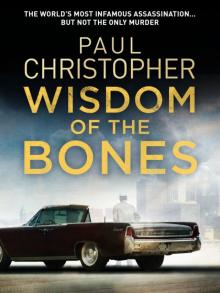 Wisdom of the Bones
Wisdom of the Bones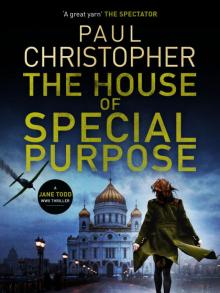 The House of Special Purpose
The House of Special Purpose The Second Assassin
The Second Assassin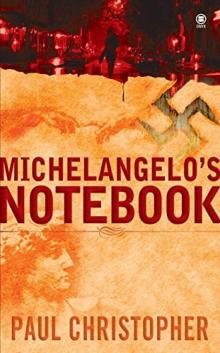 Michelangelo's Notebook
Michelangelo's Notebook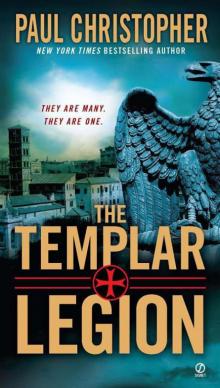 Templar Legion
Templar Legion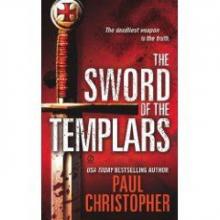 The Sword of the Templars t-1
The Sword of the Templars t-1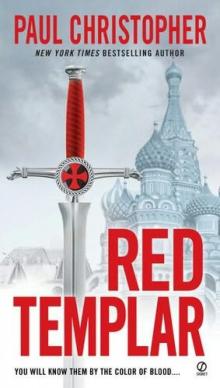 Red Templar
Red Templar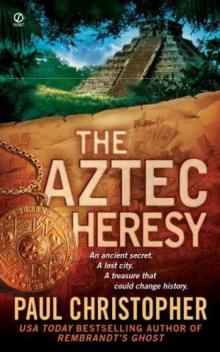 The Aztec Heresy
The Aztec Heresy The Templar Legion
The Templar Legion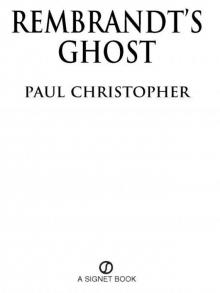 Rembrandt's Ghost
Rembrandt's Ghost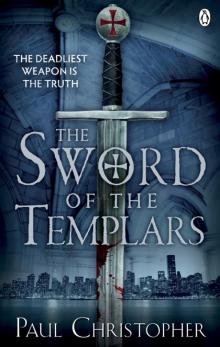 Sword of the Templars
Sword of the Templars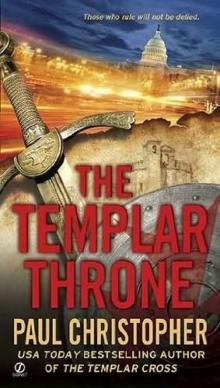 The Templar throne t-3
The Templar throne t-3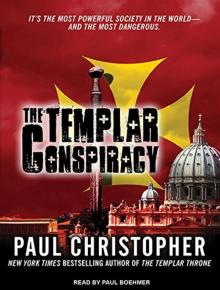 The Templar Conspiracy
The Templar Conspiracy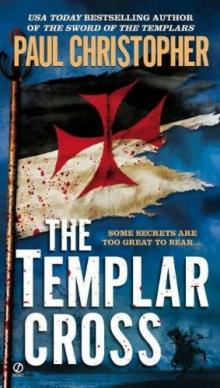 The Templar Cross t-2
The Templar Cross t-2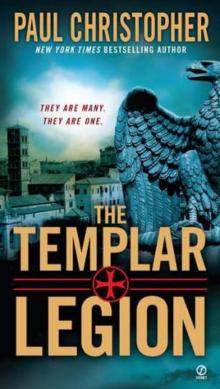 The Templar Legion t-5
The Templar Legion t-5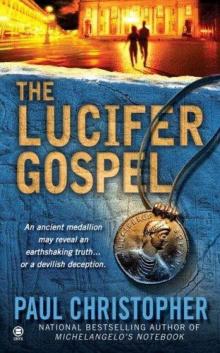 The Lucifer Gospel
The Lucifer Gospel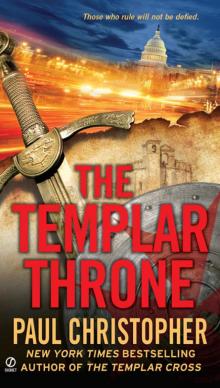 Templar Throne
Templar Throne Michelangelo_s Notebook fr-1
Michelangelo_s Notebook fr-1 The Lucifer Gospel fr-2
The Lucifer Gospel fr-2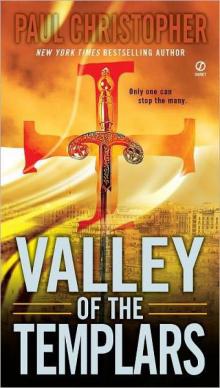 Valley of the Templars ts-7
Valley of the Templars ts-7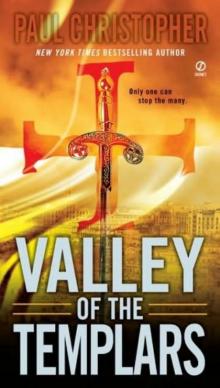 Valley of the Templars
Valley of the Templars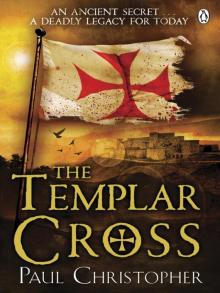 Templar Cross
Templar Cross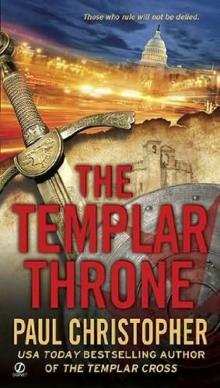 The Templar Throne
The Templar Throne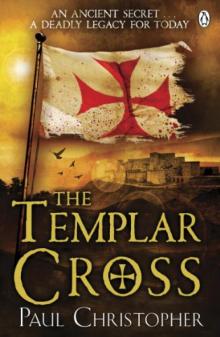 The Templar Cross
The Templar Cross Lost City of the Templars
Lost City of the Templars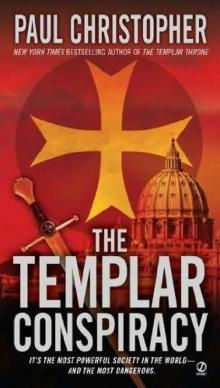 The Templar conspiracy t-4
The Templar conspiracy t-4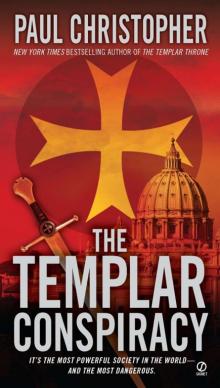 Templar Conspiracy
Templar Conspiracy